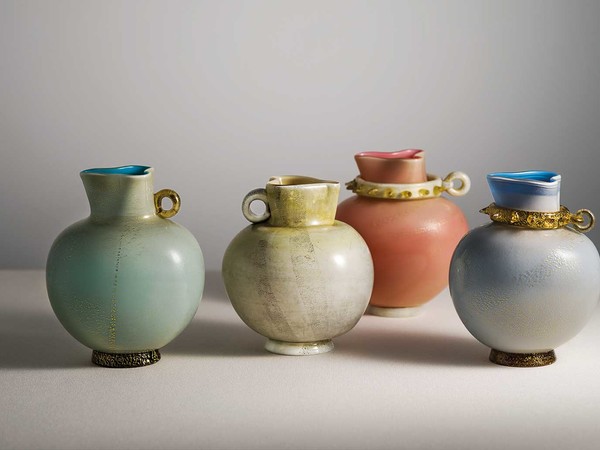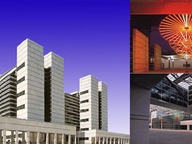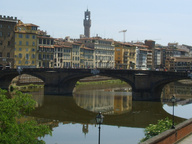Tomaso Buzzi at Venini

Tomaso Buzzi alla Venini, Le Stanze del Vetro, Venezia
From 14 Settembre 2014 to 11 Gennaio 2015
Venice
Place: Le Stanze del Vetro
Address: Isola di San Giorgio Maggiore
Times: 10 am - 7 pm; closed on Wednesday
Responsibles: Marino Barovier
Ticket price: free entry
Telefono per informazioni: +39 041 5229138
E-Mail info: info@lestanzedelvetro.it
Official site: http://www.lestanzedelvetro.it
The September 14, 2014 opens to the public on the Island of San Giorgio Maggiore in Venice, the exhibition Tomaso Buzzi at Venini edited by Marino Barovier. The exhibition is the third in the series of exhibitions dedicated to the history of the glassworks Venini and organized by Le Stanze del Vetro, multi-year cultural project initiated by the Fondazione Giorgio Cini and Pentagram Stiftung for the study and appreciation of glass art of the twentieth and twenty-first century.
Architect Tomaso Buzzi (1900-1981) was a lively protagonist of the so-called “Novecento Milanese”. He was friend with Gio Ponti and partner of "Il Labirinto".
Together with Gio Ponti, Tomaso Buzzi became one of the most important creators of the Italian gusto of the 1930s, for the elegance and refinement that he brought to the applied arts.
Between 1932 and 1933 Tomaso Buzzi began his collaboration with the Venini glassware company, which would continue, albeit episodically, in later years. Buzzi’s creative contribution was characterised by experimentation with both materials and forms. Indeed, his broad research included lighting designs, thereby helping to reveal a new facet of Murano’s traditional glass craftsmanship.
When Buzzi arrived at the Venini company in Murano, in 1932, he brought with him a remarkable cultural baggage and a thorough knowledge of ancient art, in particular of the Etruscan period, which particularly fascinated him. It is from here that Buzzi sought inspiration, with the aim of creating new and original artefacts, which on the one hand did not deny their historical inspiration, yet on the other exalted the plastic characteristics of glass.
This happened through the experimentation with a new glass material, the so called “vetro incamiciato”, with several layers of color and gold leaf.
The new technique, invented by Buzzi, radically changed the appearance of the glass produced at Venini, contributing to the need for innovation of the Murano-based glassware company, and re-asserting its vocation for producing elegant and refined glass. Thanks to the analysis and research of the drawings preserved at the Venini archive, it appears that Buzzi studied 14 different techniques for the production of the multi-layered “vetri incamiciati”, that can be compared to the glazes techniques in painting.
The exhibition Tomaso Buzzi at Venini, curated by Marino Barovier, retraces this brief but fruitful collaboration, documented not only through the selected works (approximately 200) and the original drawings preserved in the Venini archive, but also through an unprecedented collection of drawings preserved at the Scarzuola in Montegabbione (near Terni), the theatre-city that Buzzi designed around a monastery and XIIIth-century church at the end of the 1960s as his own house, and continued to work on until his death in 1981.
On the occasion of the exhibition, Skira will publish the first complete “catalogue raisonné” of Tomaso Buzzi’s glass work, edited by Marino Barovier with Carla Sonego.
Architect Tomaso Buzzi (1900-1981) was a lively protagonist of the so-called “Novecento Milanese”. He was friend with Gio Ponti and partner of "Il Labirinto".
Together with Gio Ponti, Tomaso Buzzi became one of the most important creators of the Italian gusto of the 1930s, for the elegance and refinement that he brought to the applied arts.
Between 1932 and 1933 Tomaso Buzzi began his collaboration with the Venini glassware company, which would continue, albeit episodically, in later years. Buzzi’s creative contribution was characterised by experimentation with both materials and forms. Indeed, his broad research included lighting designs, thereby helping to reveal a new facet of Murano’s traditional glass craftsmanship.
When Buzzi arrived at the Venini company in Murano, in 1932, he brought with him a remarkable cultural baggage and a thorough knowledge of ancient art, in particular of the Etruscan period, which particularly fascinated him. It is from here that Buzzi sought inspiration, with the aim of creating new and original artefacts, which on the one hand did not deny their historical inspiration, yet on the other exalted the plastic characteristics of glass.
This happened through the experimentation with a new glass material, the so called “vetro incamiciato”, with several layers of color and gold leaf.
The new technique, invented by Buzzi, radically changed the appearance of the glass produced at Venini, contributing to the need for innovation of the Murano-based glassware company, and re-asserting its vocation for producing elegant and refined glass. Thanks to the analysis and research of the drawings preserved at the Venini archive, it appears that Buzzi studied 14 different techniques for the production of the multi-layered “vetri incamiciati”, that can be compared to the glazes techniques in painting.
The exhibition Tomaso Buzzi at Venini, curated by Marino Barovier, retraces this brief but fruitful collaboration, documented not only through the selected works (approximately 200) and the original drawings preserved in the Venini archive, but also through an unprecedented collection of drawings preserved at the Scarzuola in Montegabbione (near Terni), the theatre-city that Buzzi designed around a monastery and XIIIth-century church at the end of the 1960s as his own house, and continued to work on until his death in 1981.
On the occasion of the exhibition, Skira will publish the first complete “catalogue raisonné” of Tomaso Buzzi’s glass work, edited by Marino Barovier with Carla Sonego.
SCARICA IL COMUNICATO IN PDF
COMMENTI

-
 Dal 31 gennaio 2024 al 04 maggio 2025
Fermo | Palazzo dei Priori
Dal 31 gennaio 2024 al 04 maggio 2025
Fermo | Palazzo dei Priori
-
 Dal 20 dicembre 2024 al 04 maggio 2025
Fermo | Palazzo dei Priori
Dal 20 dicembre 2024 al 04 maggio 2025
Fermo | Palazzo dei Priori
-
 Dal 20 dicembre 2024 al 04 maggio 2024
Gorizia | Palazzo Attems Petzenstein
Dal 20 dicembre 2024 al 04 maggio 2024
Gorizia | Palazzo Attems Petzenstein
-
 Dal 18 dicembre 2024 al 18 dicembre 2024
Venezia | Museo Correr
Dal 18 dicembre 2024 al 18 dicembre 2024
Venezia | Museo Correr
-
 Dal 14 dicembre 2024 al 02 marzo 2025
Palermo | Palazzo Abatellis
Dal 14 dicembre 2024 al 02 marzo 2025
Palermo | Palazzo Abatellis
-
 Dal 12 dicembre 2024 al 23 febbraio 2025
Roma | Palazzo Altemps
Dal 12 dicembre 2024 al 23 febbraio 2025
Roma | Palazzo Altemps


